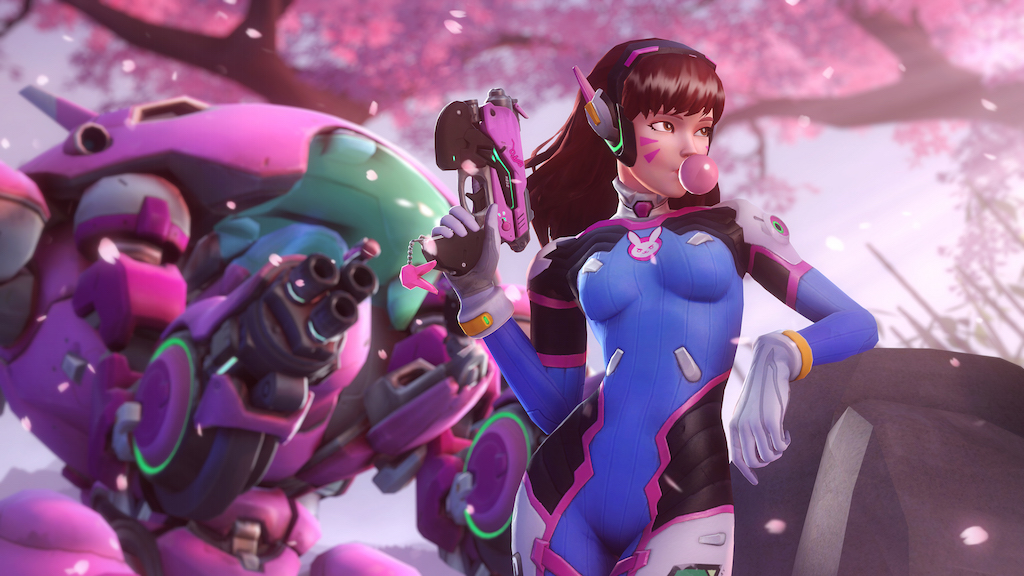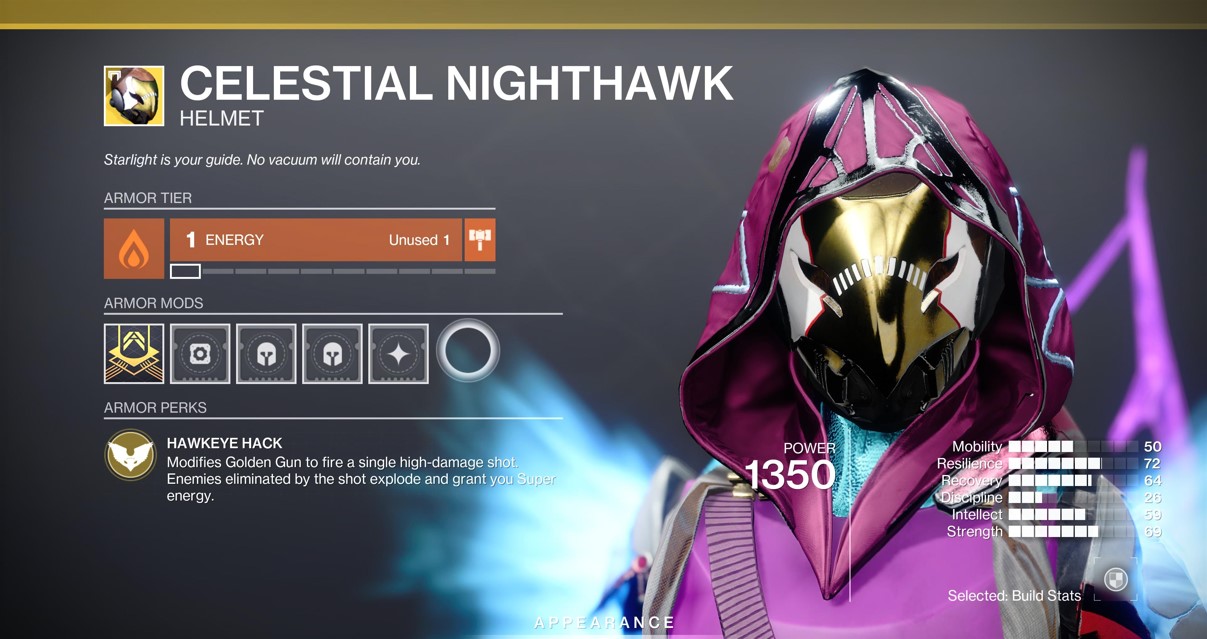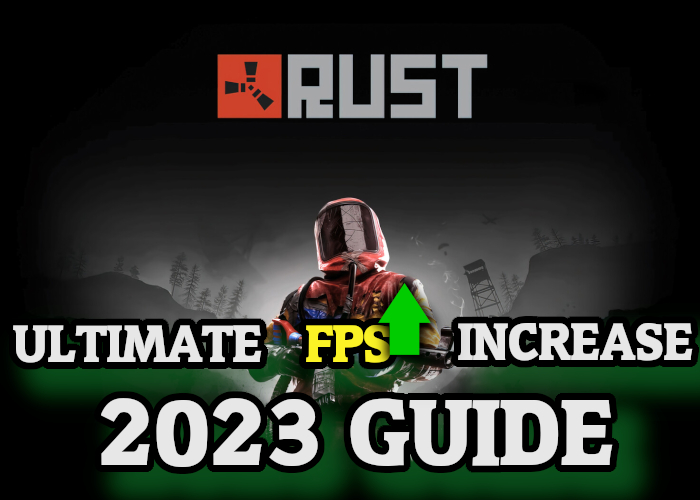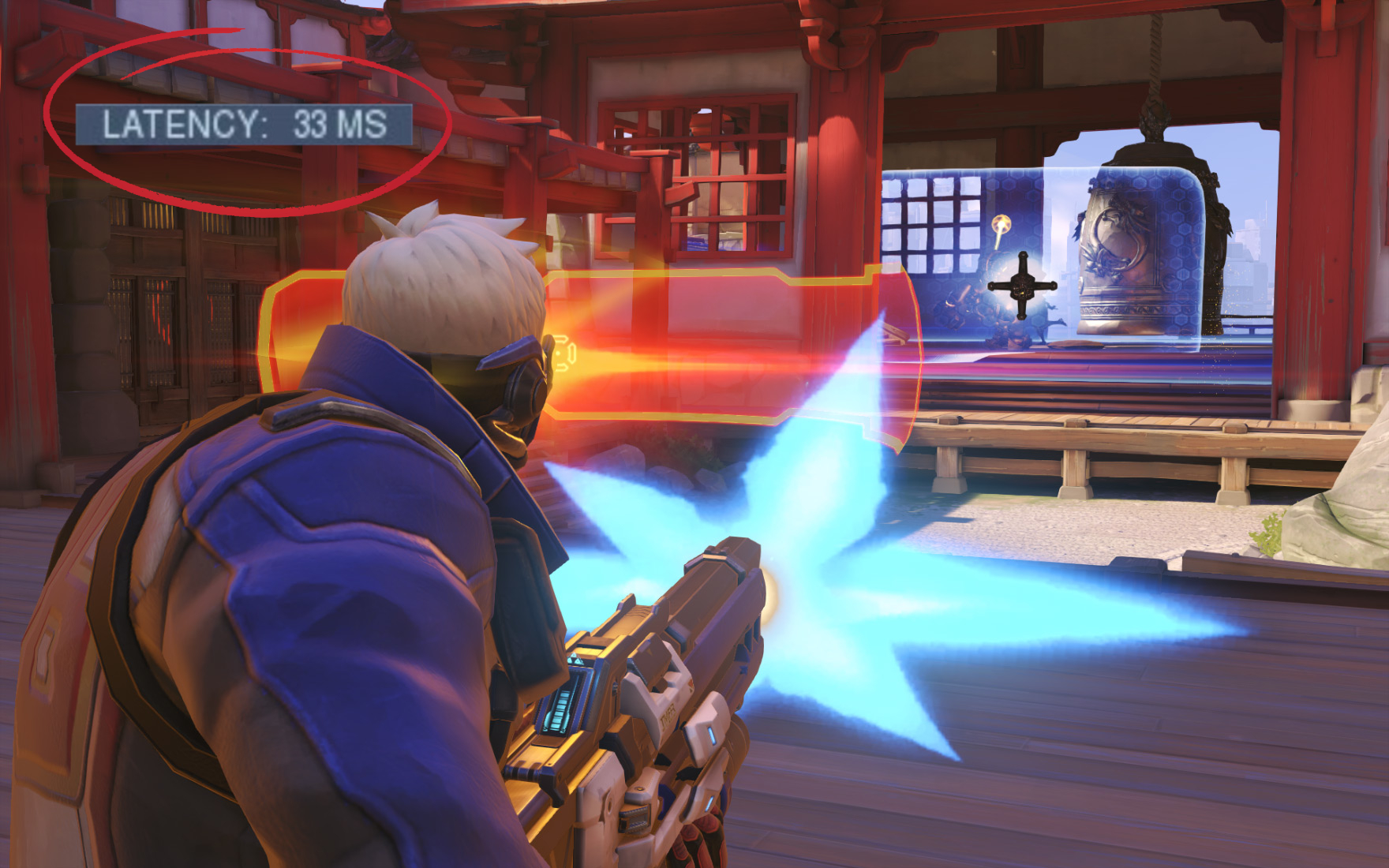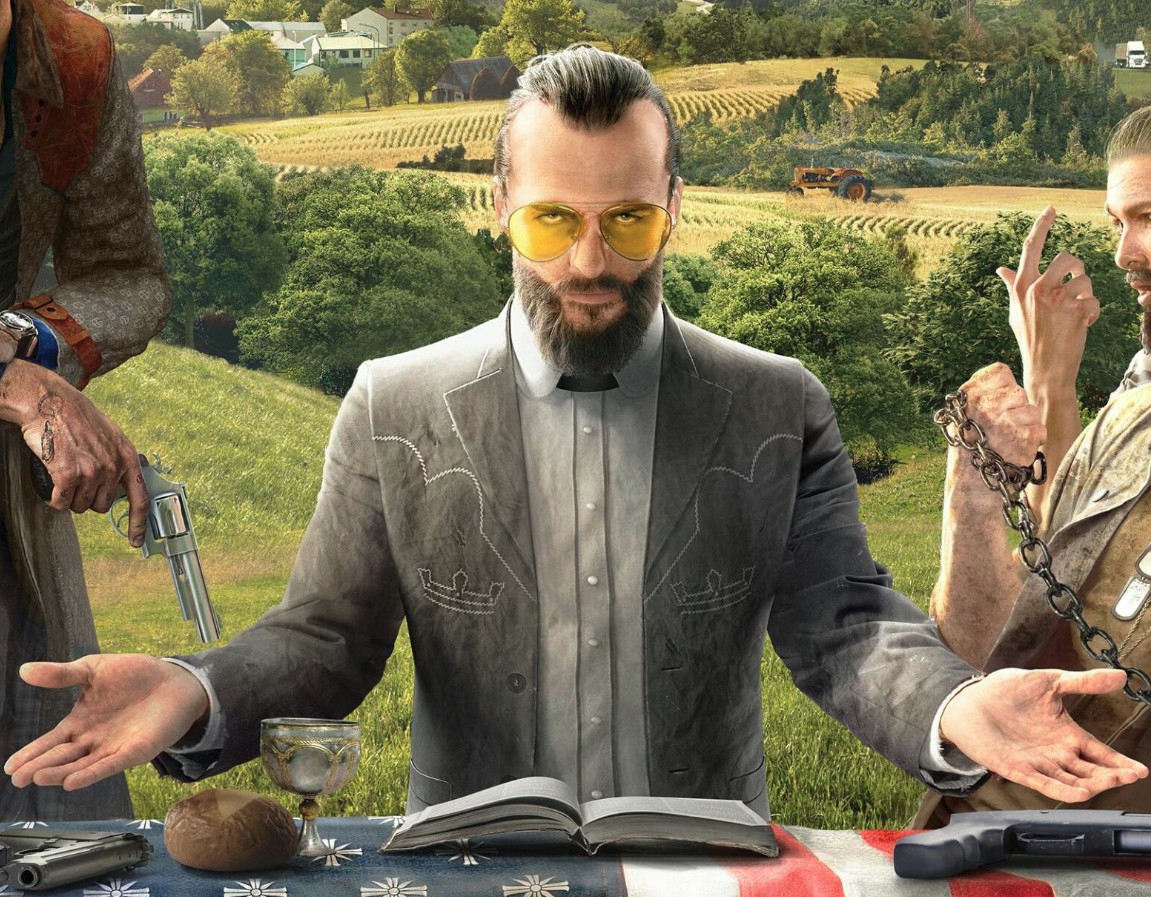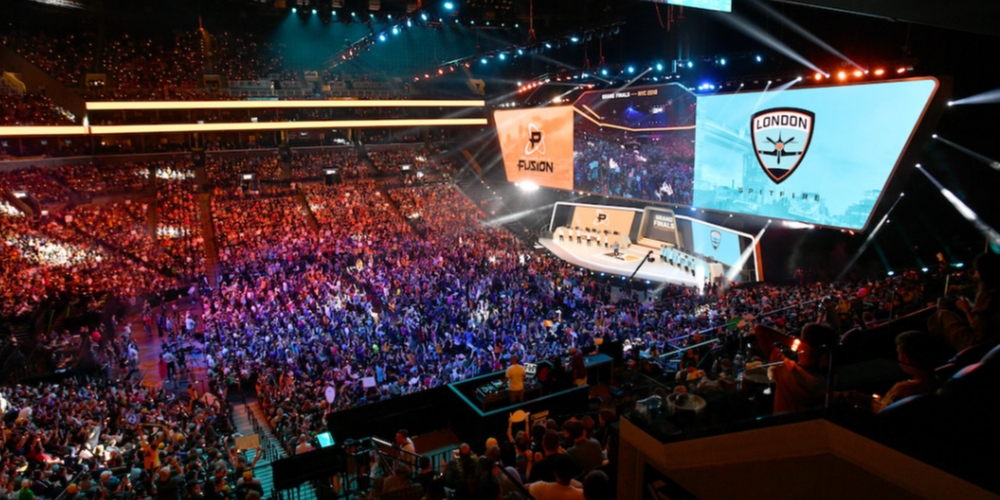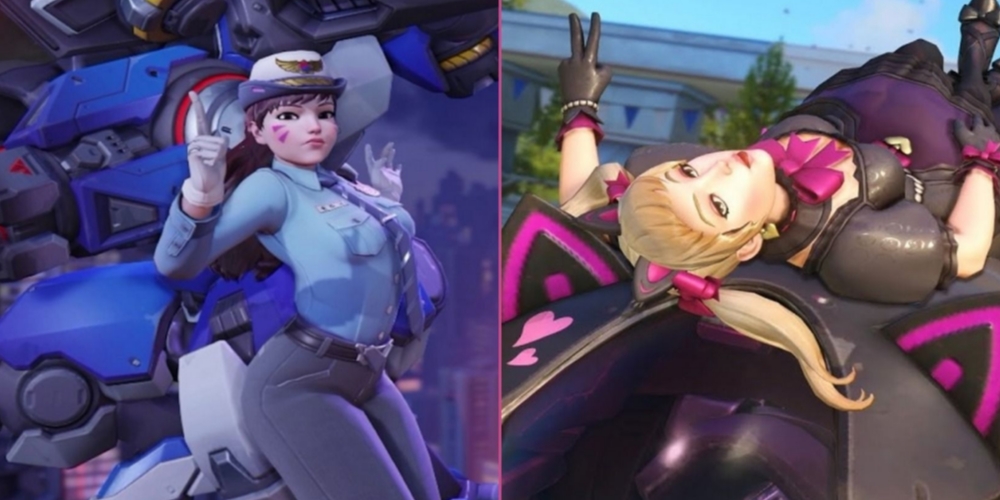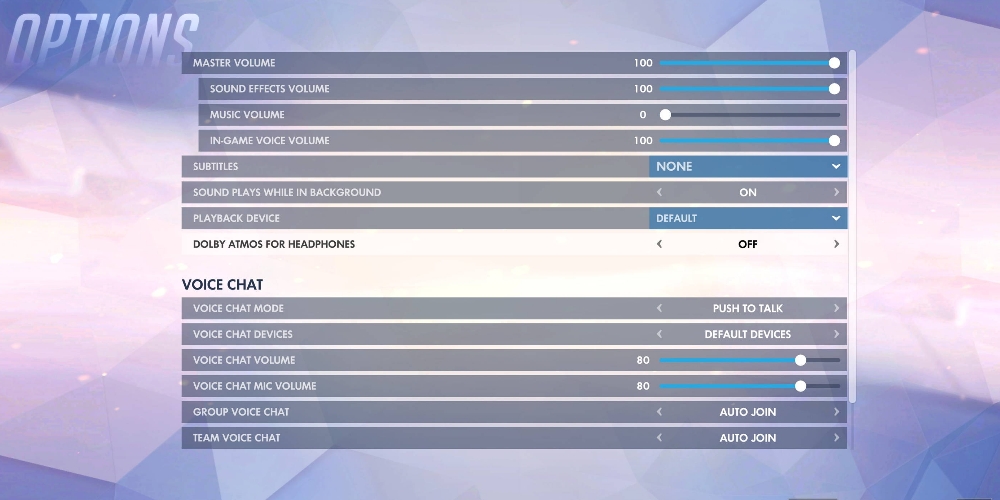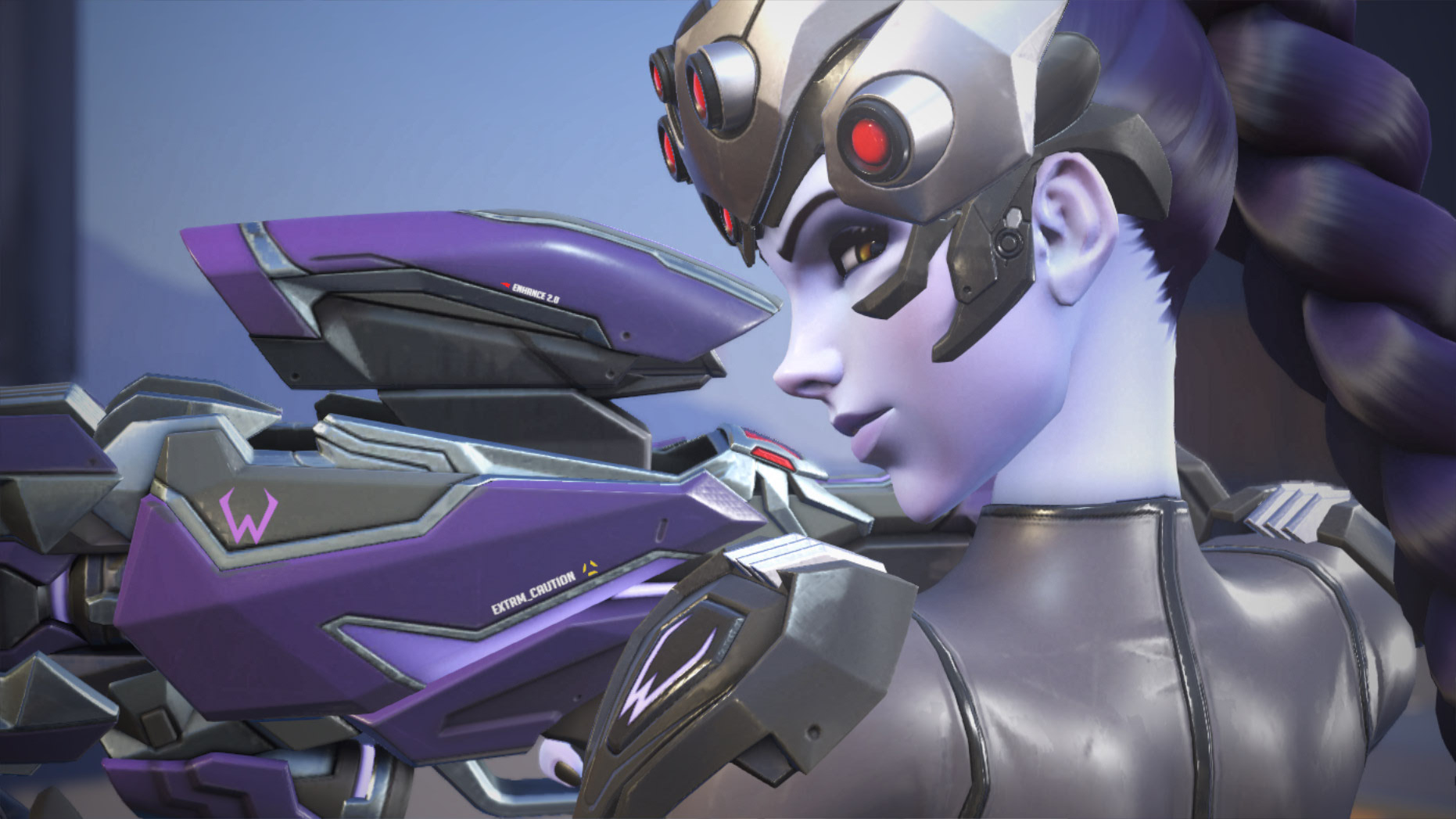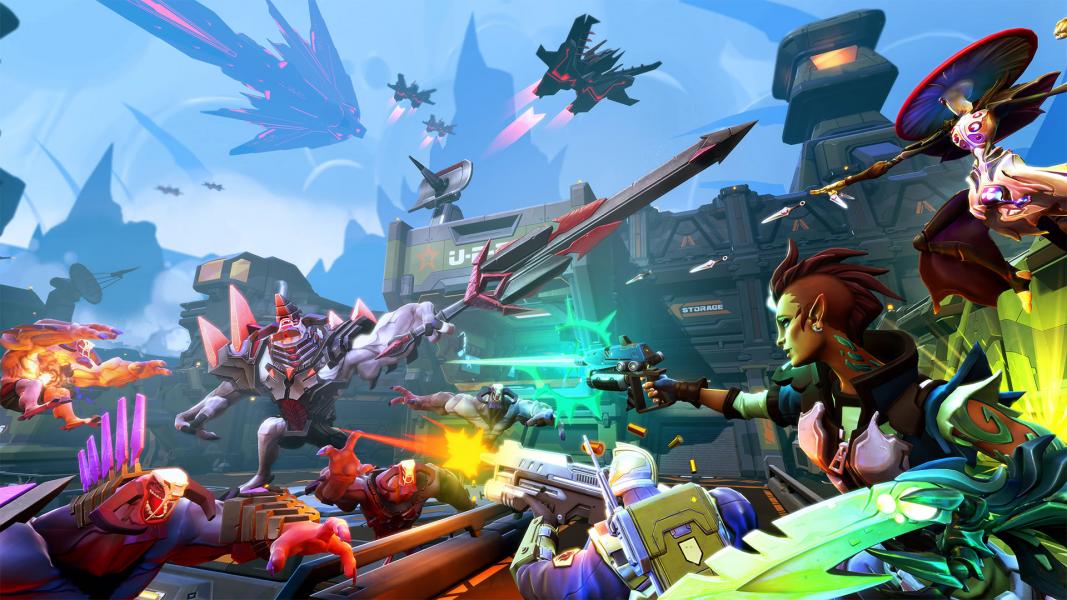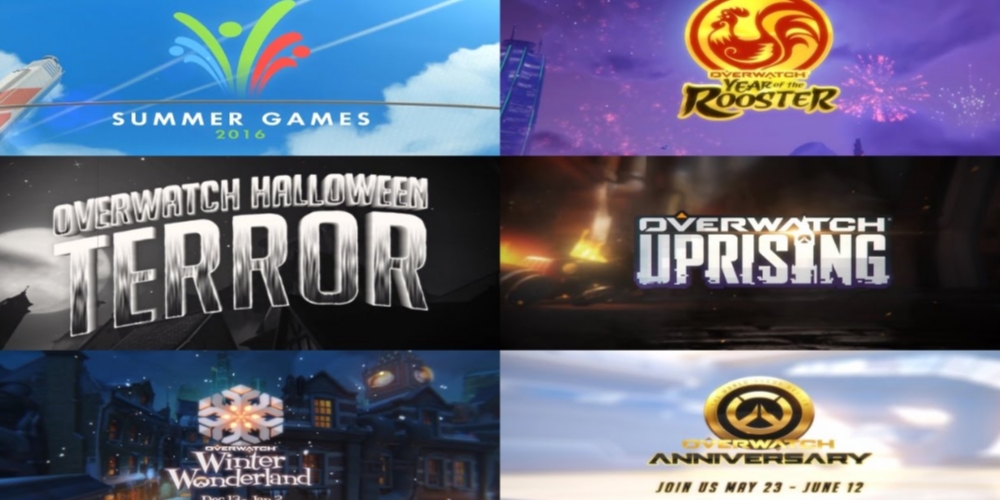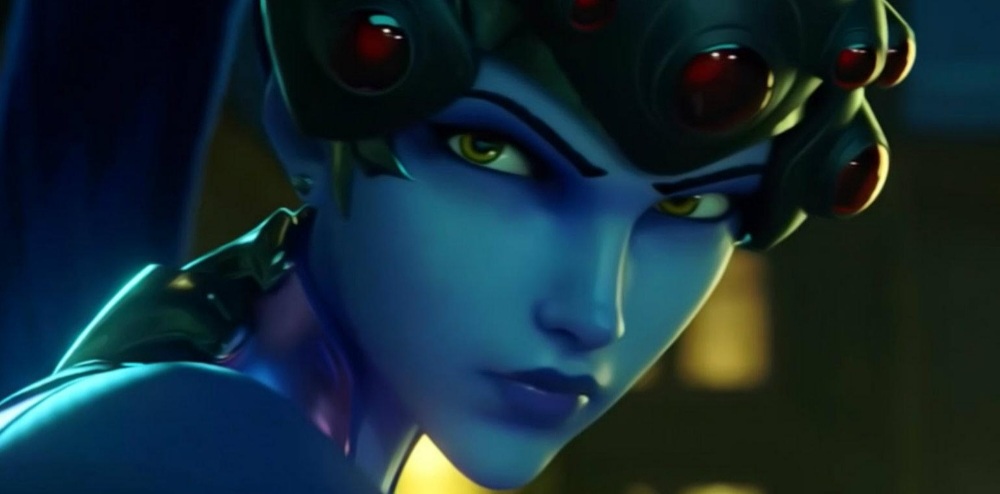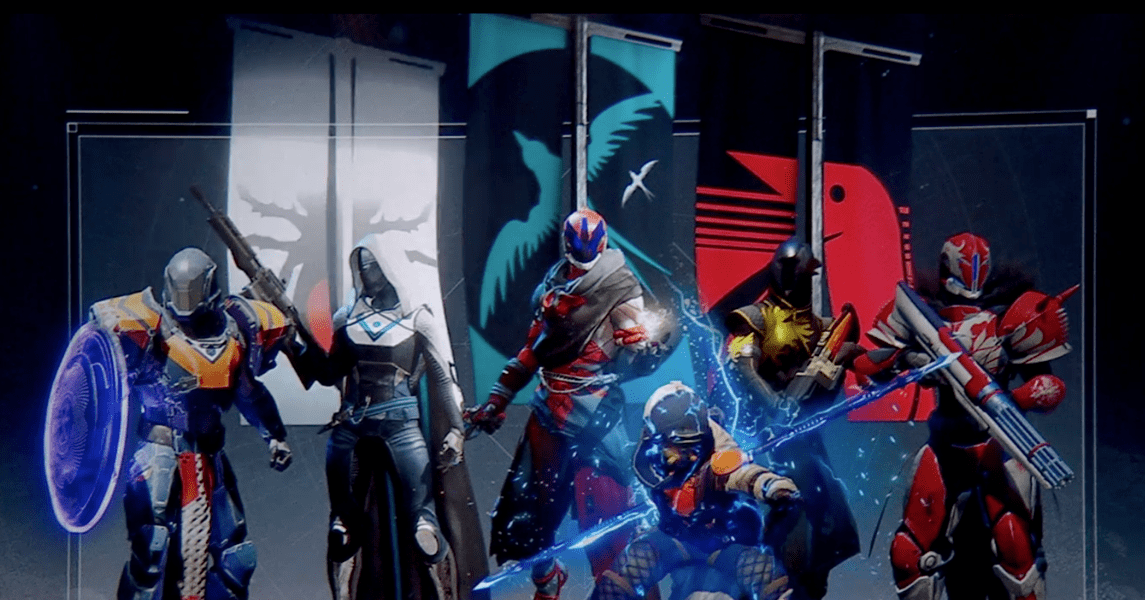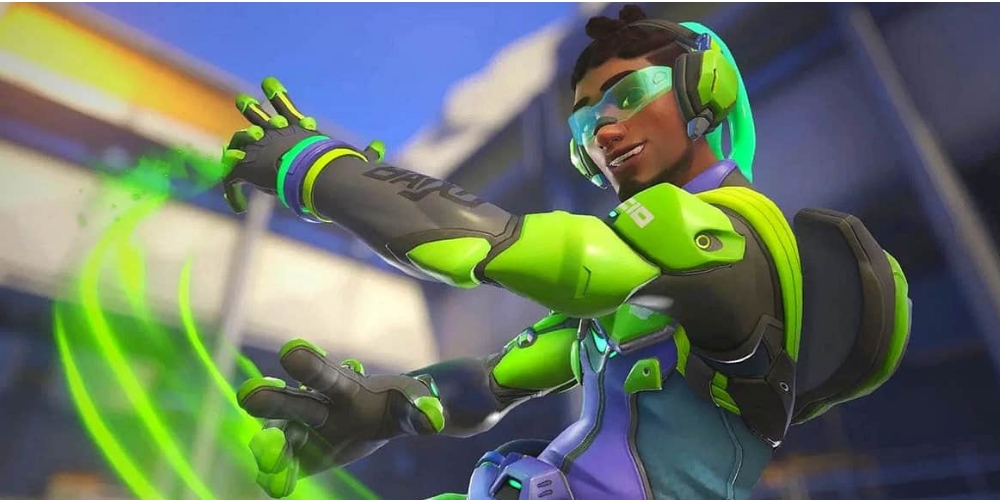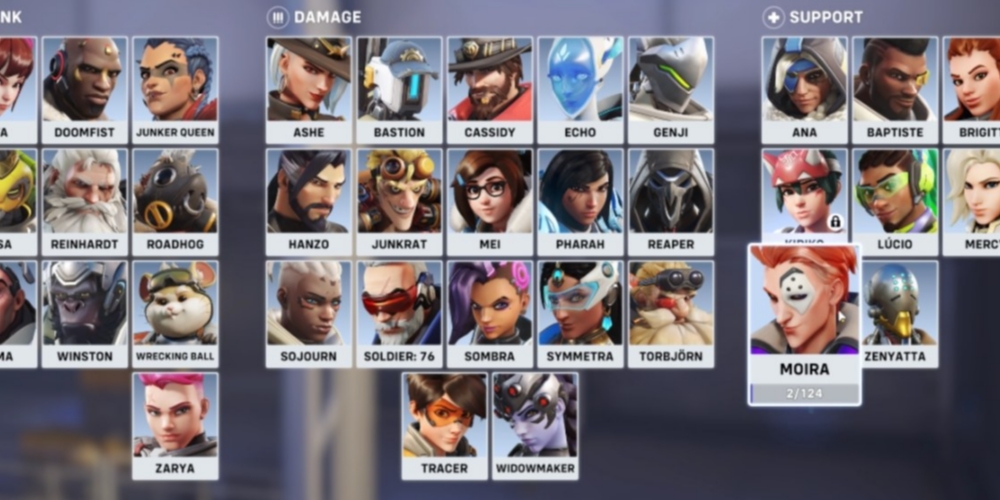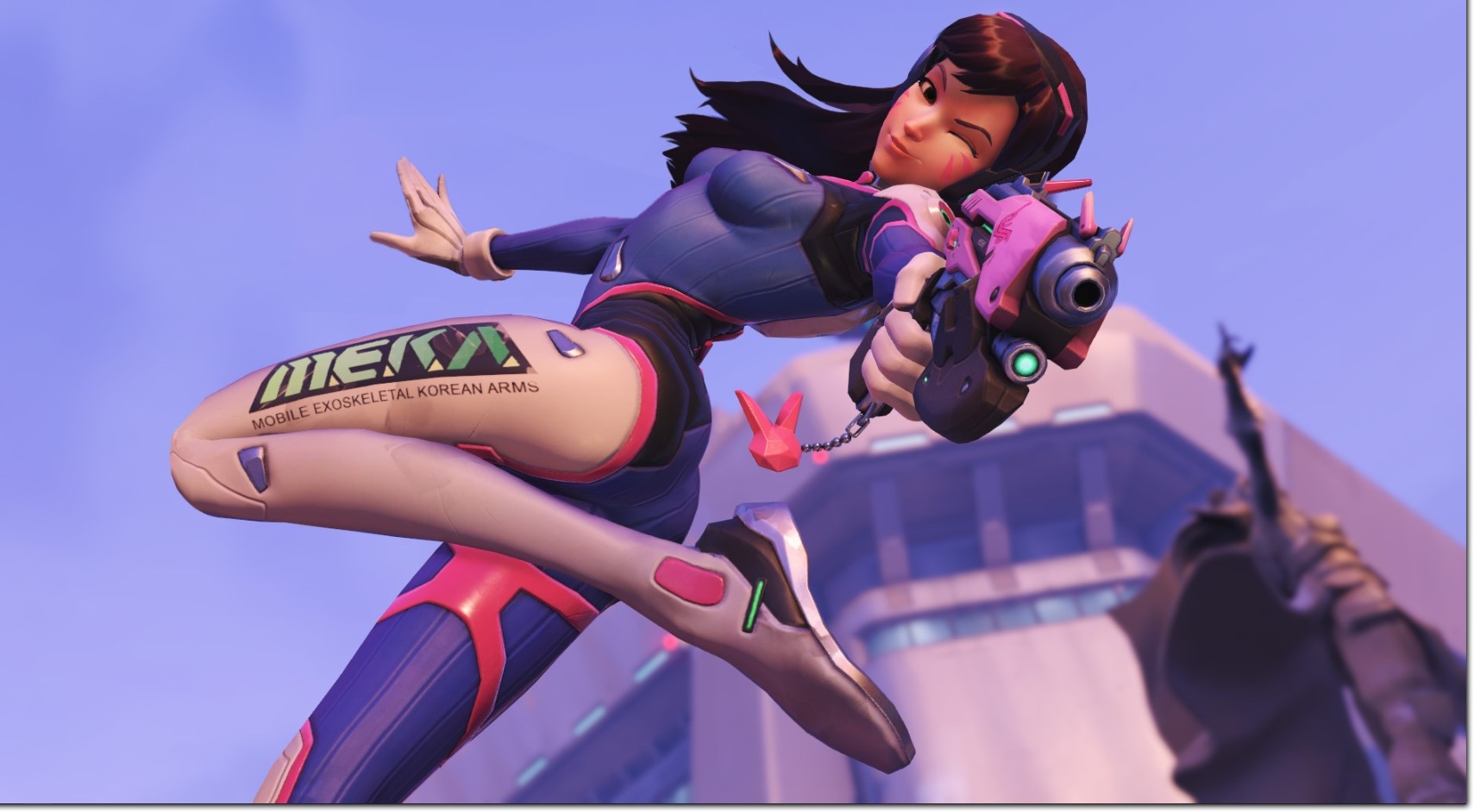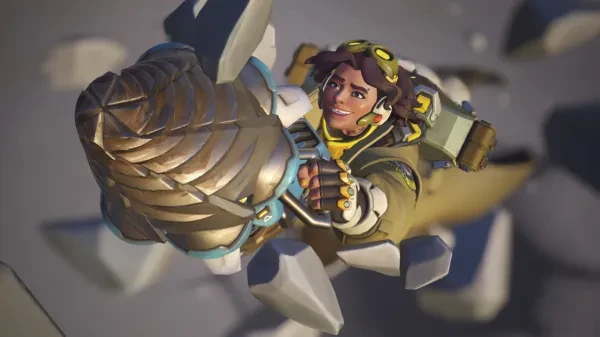
Flankers are pretty good this season, but which ones perform the best? Read this and find out.
1) Tracer

- Pulse Pistols: Short-range automatic weapons (220 DPS).
- Blink: Teleport in the direction you are moving.
- Recall: Travel back in time to your previous location and health.
- Pulse Bomb: Throw out a powerful sticky explosive (350 damage).
Hero score: 87/100
Tracer is almost always going to be a good pick, since she rewards skill and doesn’t get many balance changes. Once you learn how to play her, you’ll be safe to run her in most games unless you’re being hard countered.
She’s hard for most squishy heroes to kill, unless they have some kind of way to cancel her blinks temporarily, since with good cooldown management she’ll almost always be able to disengage whenever she wants and then come back to kill them later.
Since multiple of the best heroes to pair her with are meta this season, Tracer’s even better, since she’ll usually have someone to follow up on her flanks or set up space so she can do her own thing.
2) Reaper
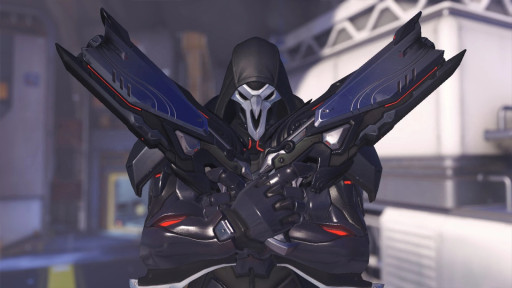
- Hellfire Shotguns: Short-range spread weapons (216 DPS).
- Shadow Step: Teleport to a targeted location.
- Wraith Form: Move faster and become invulnerable, but you cannot shoot.
- Death Blossom: Damage all nearby enemies (170 DPS).
- The Reaping: Dealing damage heals you.
Hero score: 76/100
Reaper’s a little more flexible than some of the other flankers, because he can be played as to flank or hang back with his team and brawl. When he has teammates like Reinhardt, Ramattra or Mei, the enemy tank will probably die really quickly when focused.
He’s also hard to deal with on short range maps, since it’s easier for him to get in your face, especially if he has a speed boost. Usually his low mobility is the biggest problem he has with flanking, but it doesn’t matter as much if he has help to close the distance.
On maps with lots of high ground, he’s not as good, since you can damage him during a few frames of his teleport, his range is pretty bad and his mobility isn’t good enough for him to get around quickly.
3) Genji

- Shuriken: Left click throws an accurate burst of three projectiles. Right click throws a fan of 3 projectiles in an arc (92 DPS on left click, 119 DPS on right click).
- Deflect: Deflect incoming projectiles towards the direction you are facing and block melee attacks.
- Swift Strike: Rapidly dash forward and inflict damage on enemies. Eliminations reset the cooldown (50 damage).
- Dragonblade: Unsheathe a deadly melee weapon (110 damage per swing).
- Cyber-Agility: Climb on walls and double jump.
Hero score: 71.5/100
Genji can be a little dependent on a team comp that enables him to do well, especially when it comes to his ultimate, but he can give good results when you pick the right heroes to go with him.
He hasn’t got as many things to keep himself alive as Tracer or Reaper do, with only his deflect to block projectile or hitscan damage, but it’s still a really good ability because it’s like Defense Matrix in that it can block almost anything. It also sends the bullets right back, damaging the person that was shooting at him.
His dash can also reset if he gets a kill or elimination, so in the right situation, he can go through the enemy team multiple teams and do a lot of damage for free. It’s not likely to happen, but it’s a good way to quickly earn ult charge when it does.
4) Pharah
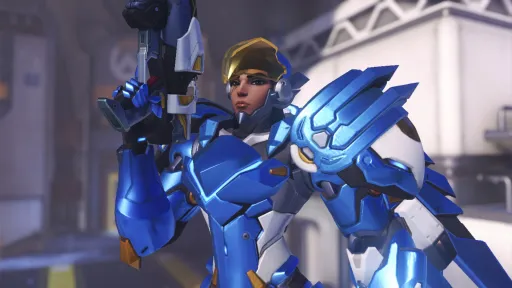
- Rocket Launcher: Long-range explosive projectile weapon (150 DPS).
- Jet Dash: Boost horizontally.
- Jump Jet: Fly rapidly upwards. Grants some fuel.
- Concussive Blast: Launch an explosive blast to knock back enemies (30 damage on direct hit).
- Barrage: Launch a continuous volley of mini-rockets (1200 DPS).
- Hover Jets: Hold to hover.
Hero score: 68/100
If Pharah’s uncontested, she can be one of the most annoying heroes to play against, since most heroes in the game struggle to interact with her outside of when she runs out of fuel and needs to land for a little while.
She’s got plenty of mobility, a massive hitbox on her rockets and she can two shot anyone below 250 HP. Her ultimate also has the highest DPS in the game, so you can drop on someone when they’re not suspecting it and kill them before they can even react to you if your flank is good.
Once the enemy team picks hitscan heroes though, things get a little harder. You’ll need to use cover more often, especially if you don’t have supports that can consistently heal you, as well as be more careful with where you flank from so you don’t get noticed early.
5) Venture

- Smart Excavator: Launch a seismic charge that bursts after a short distance (107 DPS).
- Drill Dash: Dash forward while above or underground, pushing enemies back. The cooldown is accelerated while underground (30 initial damage, 60 DOT).
- Burrow: Move underground and become invulnerable. Press or hold left shift to emerge and damage enemies (75 to 110 damage max charge, 38 to 55 damage minimum charge).
- Tectonic Shock: Send our damaging shockwaves (130 damage per wave).
- Explorer’s Resolve: Using abilities grants temporary shields (30 per ability use, caps at 75).
Hero score: 64/100
Venture is far from a bad pick, but they have pretty low range in a meta where most of the good DPS are snipers or fliers. They also have a slightly bigger hitbox, loud footsteps and predictable movement, so a good Widowmaker can probably kill them before they get close enough to kill her.
On short range maps, they can work pretty well, because they have high burst damage up close and their burrow lets them cleanse any debuffs they might have unless they’re stunned out of it. Their passive giving them shields also makes them annoying to kill without burst damage.
They also have a hard time killing Juno, Pharah and Echo since all three of them can fly. Because of their short range, you’ll probably have to swap if the enemy team is running multiple flying heroes. They’re pretty good in to Tracer and Genji though, since they both want to play up close.
6) Sombra
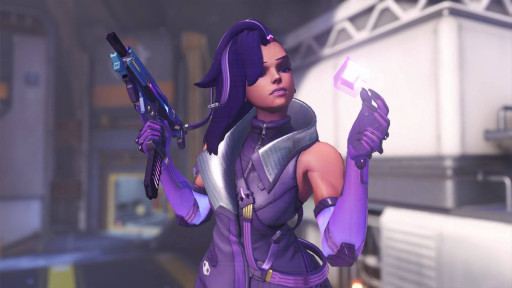
- Machine Pistol: Short-range automatic weapon (160 DPS).
- Hack: Hold to hack. Hacked enemies cannot use abilities (for 1 second) and can be seen through walls. Hacked health packs spawn faster and can’t be used by enemies. Taking damage interrupts the hack attempt.
- Translocator: Throw a beacon and teleport to it. Become stealthed for a short duration after teleporting.
- Virus: Infect enemies with a projectile that deals damage over time. Virus damages hacked enemies at a faster rate (35 impact damage on unhacked enemies, 70 on hacked ones + 75 DOT).
- EMP: Deal damage to all nearby enemies equal to a percentage of their current health, hacking them and destroying barriers near you (Damage is 25% of enemy’s health).
Hero score: 52/100
The recent rework made Sombra feel a lot clunkier. You only have 5 seconds of invisibility, you’re revealed when you hack someone and her translocator is the only way to go invisible now. Her stealth was how she set up flanks and the translocator was supposed to be for teleporting out, but now you have to choose if you want to use it for being aggressive or backing away.
Having her stealth tied to a mobility skill feels a little counterproductive, since it makes flanking like she used to harder and you’re going to spend more time near your team than before.
The ability lockout on her hack is shorter too, which gives less time to kill the person she’s going for or to stop mobile tanks like Doomfist or Ball from annoying her supports. You can still counter them if you stick around in the backline, but that isn’t what Sombra’s kit was designed for.

